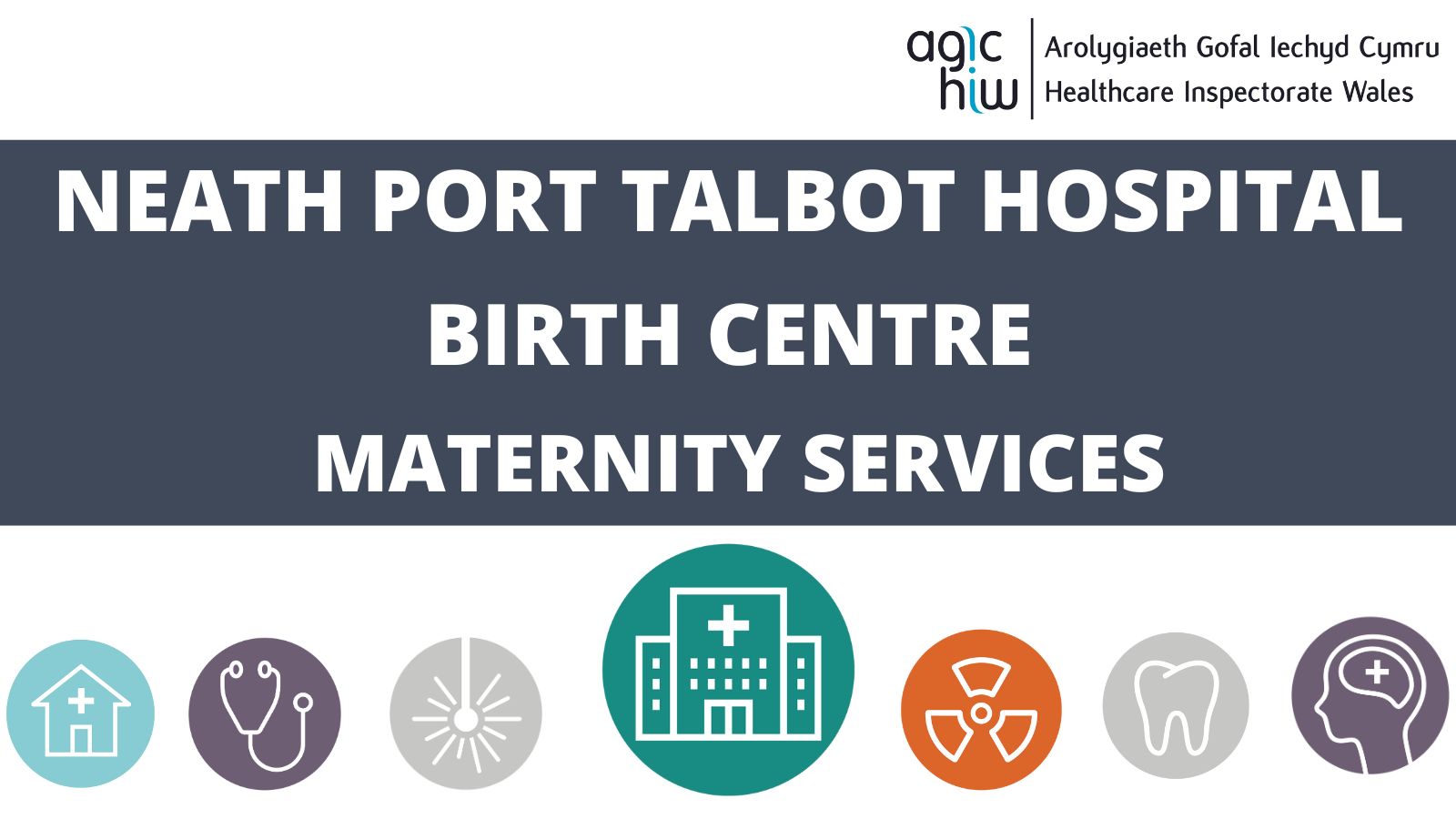Maternity Services at Neath Port Talbot Hospital Birth Centre praised but areas for further improvement
Healthcare Inspectorate Wales (HIW) has published a report following an unannounced inspection of the maternity services at Neath Port Talbot Hospital, managed by Swansea Bay University Health Board. The inspection of the birth centre took place over three consecutive days in February 2025.

Overall, inspectors found that patients were receiving compassionate, person-centred care, with staff consistently showing kindness and respect. Feedback from those using the service was positive, particularly in relation to the professionalism of midwives and the welcoming environment. However, some areas for improvement were identified, including access to information, signage, and patient records security.
Inspectors observed well-functioning teams with clear lines of reporting and accountability within the management structure. We were informed that managers were approachable, friendly, kind, and supportive. Daily staffing huddles were held to review workforce requirements in line with patient needs, which inspectors viewed as a notable practice. Staff reported being encouraged to escalate any capacity issues and felt empowered to raise concerns, highlighting a positive culture focused on learning from incidents. We saw that transfers were well integrated into the Welsh Ambulance Service Trust priority systems, and inspectors observed positive working relationships with staff during care transfers. The health board’s guideline for maternity transfers was shortlisted for a Royal College of Midwifery award in 2024.
All birthing rooms were well appointed, clean and had a ‘home from home’ feeling to provide a relaxed environment for women and their birthing partners. Our review of patient care records confirmed that patients were regularly checked for personal, nutritional, and comfort needs. Staff demonstrated good awareness of their responsibilities in protecting and promoting women’s choices within the health board criteria and national guidelines for birth centre births. Additionally, documentation showed that equipment was regularly inspected for usability, and controlled drugs were safely stored and administered. Inspectors found keys to emergency drug cabinets were colour coded for clarity in the event of an emergency, which was deemed as a notable practice to support patient safety and care.
During the inspection, a concern was raised after a room containing patient records was found to be unsecured. The issue was addressed during the visit, and the records remained securely stored for the rest of the inspection. Inspectors were assured that feedback systems were in place, and reviewed the recent Birth Centre Patient Experience Report undertaken by the health board. The report collected feedback from women and families from September 2024 to January 2025 and had a 96% overall score, with comments praising the midwives' skill, professionalism, and the environment.
While the inspection was largely positive, some areas of improvement were identified. We found inconsistencies in how pregnant people access pregnancy-related information. While QR codes are standard, community staff occasionally provide leaflets to those without internet access, which can be helpful but may cause inequality depending on the midwife’s initiative. Recommendations were also made to improve signage, which is currently limited, to help direct women and families to the ward. Inspectors saw plans to engage and promote the Birth Centre in diverse and deprived communities, aiming to increase its use. However, the service should be more integrated into the health board’s maternity services to boost usage. We have asked the health board to share evidence of care provided in the Birth Centre with colleagues and ensure all staff are confident in promoting and referring women to the service.
We reviewed the Birth Centre Midwifery Unit Standards self-assessment and found that work to complete the standards is ongoing. The health board should continue progressing towards full compliance. Some maternity care policies and guidelines were found to be outdated, and the health board must ensure these are audited, updated, and shared appropriately.
Alun Jones, Chief Executive of Healthcare Inspectorate Wales, said:
It is positive to recognise the dedication and commitment of staff to ensure that women, birthing people and babies receive good care and are treated with kindness and respect at Neath Port Talbot Hospital Birthing Centre. While some challenges remain, we were impressed to see some notable practices at the centre which foster a positive culture and promote patient and staff safety. We will work closely with the health board to ensure these improvements are made and evidenced to improve patient experience and outcomes.
February 2025 – Hospital Inspection – Maternity Services – Neath Porth Talbot Hospital, Port Talbot